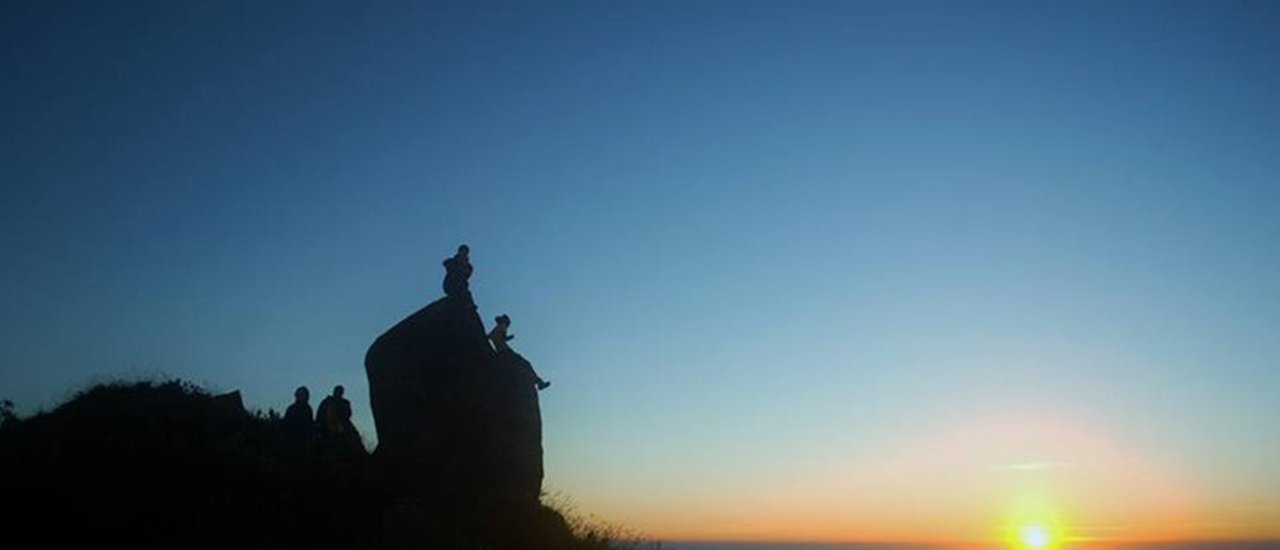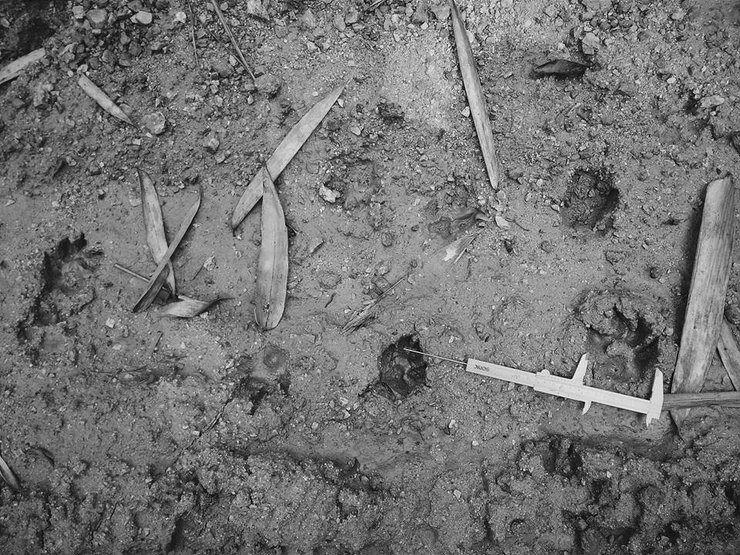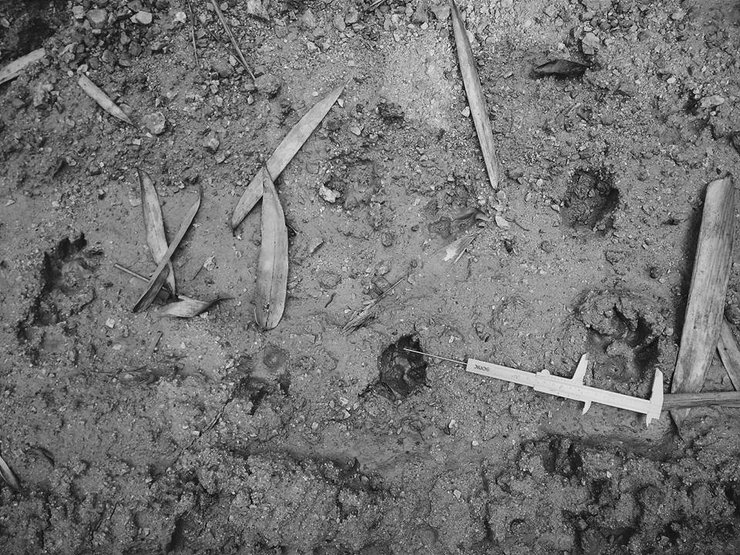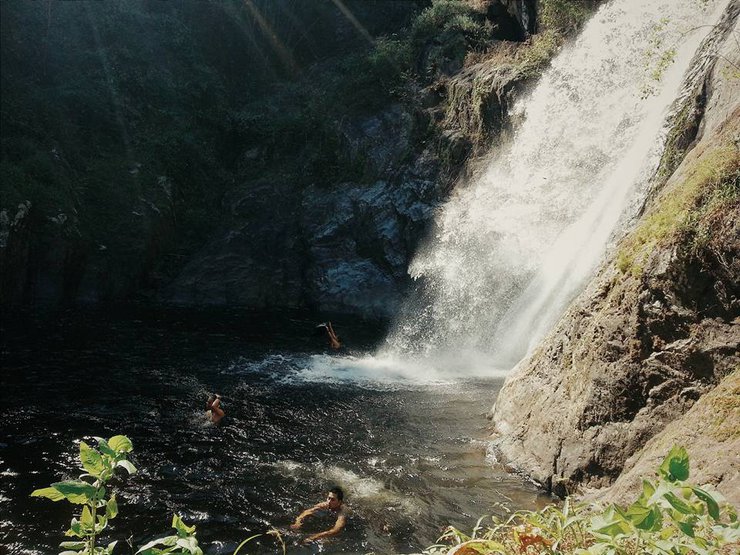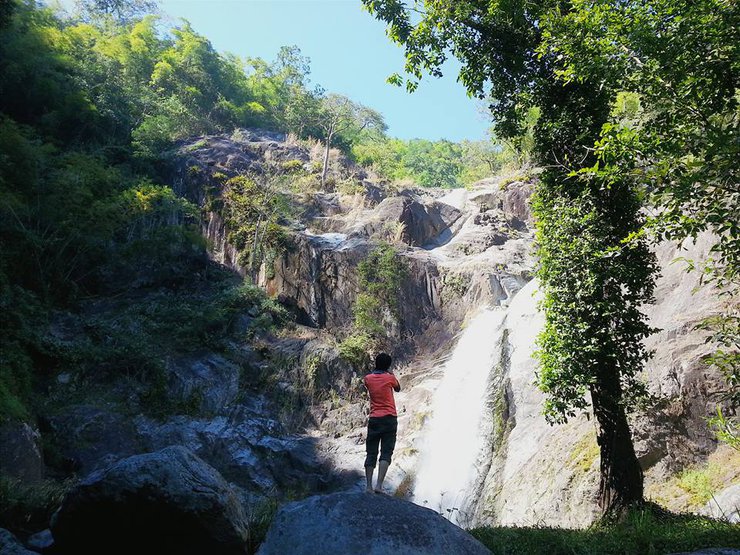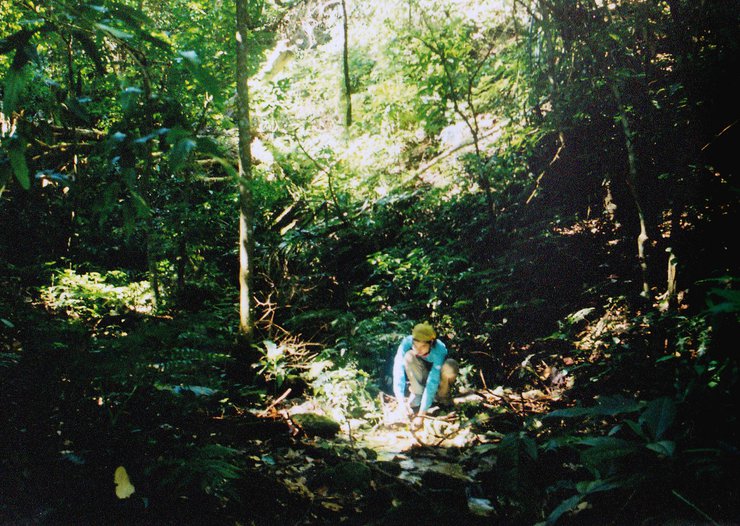Into the Woods: A Journey into the Western Wilderness
Everyone has regrets about things they didn't do. It would be great to be able to do these things while we are still physically able to travel. That's why I didn't hesitate to join this trip. I didn't want to have any regrets later on.
I had heard about the Mae Wong forest before. The government argued that sacrificing just 1% of the degraded forest to build a dam would benefit the people living in the lowlands by preventing flooding during the rainy season and providing water storage during the dry season. However, conservationists argued that even though it was only 1%, it was the heart of Mae Wong, the most intact forest and the home of Thailand's tigers. There was a lot of opposition to the dam, as we saw. We ourselves are not sure who will benefit or lose the most from the construction of the Mae Wong dam.
Despite having limited hiking experience, the recent exhilaration of conquering Doi Luang Chiang Dao instilled a sense of overconfidence. "Having climbed Doi Luang, any other mountain should be a breeze," I thought naively. Five days and four nights in the wilderness seemed manageable, envisioning simple meals, breathtaking views, and envy-inducing photos for city dwellers. However, my carefree attitude quickly vanished upon learning that there would be no porters. The prospect of carrying my own belongings and food for five days filled me with trepidation. I realized my naivety and the potential burden I could become to the team.

The first day of the trek into the forest from the park to Mae Krasa Camp, a distance of approximately 14 kilometers, was challenging with a 13-kilogram backpack. Fortunately, a park ranger's pickup truck passed by, and I was able to throw my bag in the back. I had already assessed my abilities and knew that I should take it easy and not push myself too hard, as ultimately, the burden would fall on my friends. I walked awkwardly and self-consciously, being the only one without any luggage on my shoulders. To make matters worse, I had forgotten to pack my lunch, so I had to eat from my friend's lunchbox during the break, which made me feel even more like I was taking advantage of them.
Our hiking guide, Mr. Sombut, led our team with expertise. Both guides responded instantly to their names, demonstrating their close teamwork. The dirt road was a canvas of animal tracks, providing Mr. Sombut with valuable data. From mouse deer and barking deer to tiger footprints, the trail offered a glimpse into the forest's diverse inhabitants. Before our departure, the guide informed us about tigers. He explained that tigers are naturally elusive and rarely seen by humans. The chances of encountering a tiger in the wild are extremely low, as humans are not part of their food chain and are often perceived as a threat. Tigers typically retreat upon sensing human presence. Encountering a tiger is considered a stroke of luck.

The Mae Krasa camp has separate male and female toilets, which are well-proportioned but not yet fully completed. We had to carry water from the stream that flows through the camp. We set up our tents under the big trees. I envied the men who were jumping and playing in the stream; they must have been feeling refreshed. On the first day of the trek, my anxiety increased slightly, but I didn't let anyone know that my feet were starting to ache. So I went into my tent at seven o'clock to recharge myself for the next four days.
Day Two: A Tranquil Trek Through Bamboo Forests and Pristine Wilderness
The second day of the trek began at the Mae Krasa camp, where the trail descended beneath a canopy of towering bamboo. Unburdened by heavy backpacks, the hikers enjoyed a leisurely stroll through the uncluttered forest floor, carpeted only with fallen bamboo leaves. Sunlight filtered through the bamboo stalks, casting mesmerizing patterns that rivaled the brilliance of any theatrical spotlight. Before their water bottles ran dry, they encountered the familiar stream, its banks adorned with vibrant moss, a testament to the cool, humid environment. A fallen giant, a massive tree, lay横跨 the stream, forming a natural bridge adorned with verdant moss. After replenishing their water bottles with the refreshing natural spring, the group continued their journey. The 4.5-kilometer stretch from Mae Krasa to Mae Ree camp took approximately two hours, leaving ample time to explore the Mae Ree waterfall after setting up camp. The pristine forest along the path to the waterfall teemed with evidence of wildlife. A tiger's scat provided valuable data for Mr. Sombut, revealing traces of hair and tiny hooves, likely belonging to a barking deer. The abundance of animal tracks served as a reassuring indicator of the forest's flourishing ecosystem.
The group reached Mae Ree Waterfall, where the men gleefully jumped into the water, shedding their shirts. The three women in the group, feeling a pang of envy, sat behind a rock, sipping their fermented mulberry wine, content with their more modest enjoyment. The second day promised a more conventional tourist experience, requiring less exertion and offering more relaxation. "Tomorrow will be the real deal," said Mr. Sombut.


The third day was brutal. We set off before dawn, already exhausted from the previous day's trek. We ascended 1,900 meters over a 300-meter elevation gain, leaving us breathless and drenched in sweat. Our heavy backpacks and lack of agility due to our weight made the climb even more challenging. Our hearts pounded in our chests, and breathing felt like a struggle. We had to relearn how to coordinate our bodies. Thankfully, "พี่ติ๊บ" guided us through the toughest moments, teaching us how to control our breathing and find our own pace. We didn't need to rush; we just needed to keep moving. We almost collapsed from exhaustion before reaching the lunch break at Klong 1. Unpacking our lunch in the middle of the forest made us realize the true meaning of "eating to survive." The taste of the food didn't matter; our bodies only cared about whether it was nutritious or not. Our shoes started to crack, adding another layer of difficulty to the climb. We wondered if we would ever reach Hin Ruea Bo.

The first water refill point was located in a humid forest. Fortunately, it hadn't rained for a while, otherwise we would have been covered in leeches. From the first canal, we continued to climb the steep path to the second canal. There were only a few short flat sections to rest our legs before the descent into the second canal. I hoped it wouldn't get any steeper, because the further down we went, the steeper the climb back up would be. Before reaching the campsite at the foot of the mountain, we had to help carry water for cooking. Im must have seen our condition and told us that we had enough water and didn't need to carry any more. I felt a little bad that I couldn't help the team more, especially since I was the youngest and least experienced member.

Nestled beneath the shade of towering trees, the Camp Teendoy campsite offers a serene escape. The gentle rustle of leaves creates a soothing melody, while dappled sunlight filters through the canopy, casting an ethereal glow upon the grounds. Pitching a tent amidst this tranquil ambiance surpasses the allure of luxurious hotels. After checking in to our eight-star accommodation, we embarked on a thrilling ascent to conquer the Sail Rock peak. Armed with flashlights, we prepared for our descent back to camp.



The summit of Hin Reua Bia marks the boundary between Mae Wong and Huai Kha Khaeng forests, a vast expanse of untouched wilderness. The trees below are lush and vibrant, showing no signs of degradation. P'Somchai smiles at the forest below and radios the unit that we have all arrived safely at Hin Reua Bia. We end the third day of our jungle adventure with a view from Hin Reua Bia, taking turns to capture the moment with our cameras, knowing that we may never have the chance to stand here again. We don't forget to take a picture of our infamous shoes with the view, even though they've broken down, they've brought us this far. We're truly grateful.
The peak is not as great as returning to the starting point again. The sunlight chases away the humidity through the shadows of the big trees from the east. The smoke from the fire rises in the curtain of light. It's so beautiful that I can't help myself. I go and force my friend to take a picture under the big tree before walking down the hill to enter the campsite for the last night at Mae Krasa. Uh oh… the same old shoes betrayed their owner.

The swollen and bruised feet, a result of constant impact on the descent, made walking difficult. The limited functionality of the feet threw off the entire body's rhythm, becoming a burden for the team leader who had to walk at the back of the group. Reaching the lunch break at Mae Ree Wa camp, the last one to arrive, I had to borrow a pair of oversized sandals from a friend. This time, walking was a breeze as the front of my feet no longer hit the ground. My trekking experience improved significantly with the sandals. Reaching Mae Krasa camp before nightfall, we spent our last night before concluding the four-night, five-day trek the next day.
The final day, our backpacks were heavier than before due to some damp clothes and an extra pair of shoes. We found the dirt road more challenging than the forest path, as there were no trees to provide shade from the sun. The heat significantly drained our energy. Along the way, we saw large, round elephant footprints, indicating their feeding route along the water stream. During our lunch break on the road, the sound of wild cows echoed from the nearby bamboo forest. We ate with apprehension, fearing the cows might charge out of the woods.
With a final surge of determination before reaching the park, I mentally chanted "Coke, Pepsi," a city dweller's mantra that proved effective. I briskly entered the park in flip-flops and with extreme thirst. I captured the final image of the trip with a prostration pose, then continued into the forest.
Four nights and five days with only the bare necessities: eating, drinking from the stream, no past, no worries about the future, living in the present moment with every step. I once heard Buddhadasa say, "You came empty-handed, what will you take?" But here at Hin Ruea Bo, it says, "However much you brought, you should take it all back with you. Don't leave it as a burden to nature." There is a breed of people who love to hike and camp, who crave hardship as if they were born with a chip on their shoulder and a feather bed at home. They come out to sleep on the ground, eat in the sand, and let the mosquitoes bite them for fun. We used to wonder how hiking in the mountains could be considered a vacation. Living in conditions that could easily make you sick seems strange to most people.

The Allure of the Wild: A Journey of Self-Discovery
The allure of the wild beckons, offering an escape from the sensory overload of city life. In the embrace of nature, amidst the rustling leaves and the symphony of birdsong, we rediscover the essence of our being. A five-day immersion in the wilderness, where the only sustenance is drawn from a shared stream with wild animals, becomes a testament to the resilience of the human spirit. Stripped of the conveniences of modern life, with only the bare necessities of clothing, food, and shelter, we confront the raw reality of existence.
The forest becomes our teacher, revealing the true meaning of life. The air, cleansed by the verdant canopy, becomes a vital elixir, reminding us of our fundamental dependence on nature's bounty. Yet, a paradox emerges: while the forest sustains us, some seek to exploit its riches, jeopardizing the very air we breathe.
This journey into the wild is not merely an escape; it is a profound exploration of our place in the natural world. It is a call to reconnect with the source of life, to appreciate the delicate balance that sustains us, and to recognize the responsibility we hold in preserving the wilderness that nourishes our souls.
Saowarat Pontajak
Friday, October 4, 2024 3:01 PM

